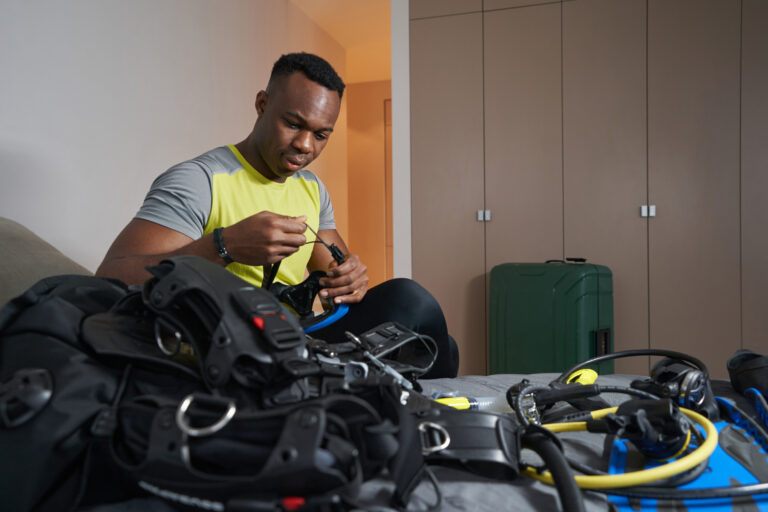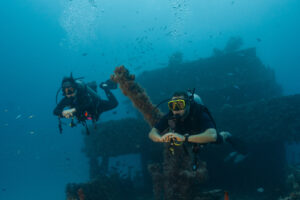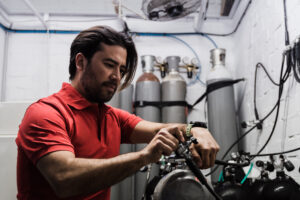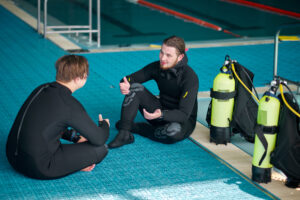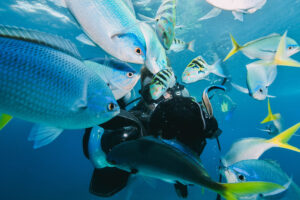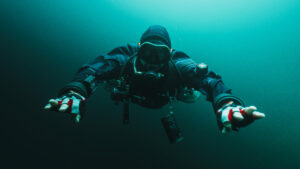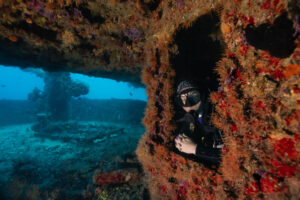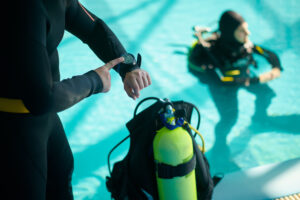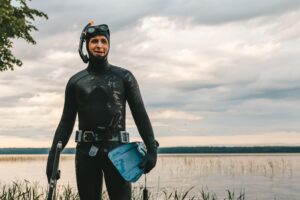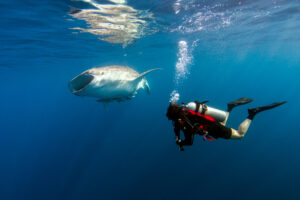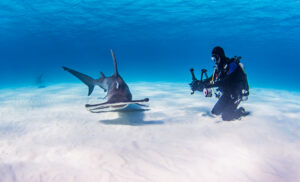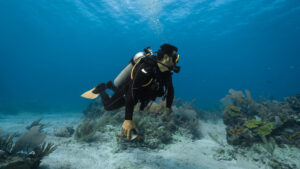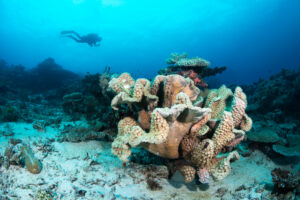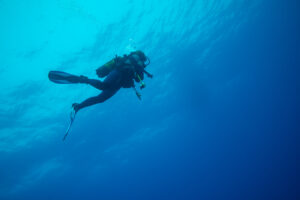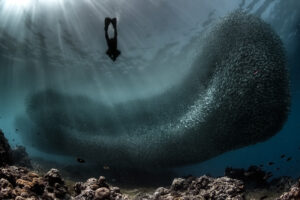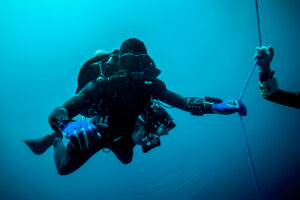What does the acronym SCUBA stand for?
Scuba diving is an underwater sport and recreational activity that enables individuals to explore and observe aquatic environments and their inhabitants while using what is known as a self-contained underwater breathing apparatus (SCUBA). SCUBA gear allows divers to breathe underwater for extended periods, providing a unique and immersive experience for enthusiasts and professionals alike. Originating in the early 20th century, scuba diving has evolved significantly over the years and has grown to become a popular pastime worldwide.
History and Development
Scuba diving traces its roots back to the early attempts at underwater exploration, including the diving bell and the use of long, air-supplied hoses that connected divers to the surface. However, the modern scuba diving experience is attributed to the inventions of two Frenchmen, Jacques-Yves Cousteau and Emile Gagnan. In 1942, they developed the Aqua-Lung, the first open-circuit, self-contained underwater breathing apparatus. This revolutionary invention allowed divers to carry their air supply with them and breathe underwater without any connection to the surface.
The Aqua-Lung was the foundation for the development of modern scuba diving equipment. As technology advanced, so too did the gear, with improvements to regulators, air cylinders, buoyancy control devices (BCDs), wetsuits, and dive computers. As a result, scuba diving became more accessible, safer, and enjoyable for a wider range of people.
Equipment
Scuba diving requires specific gear that enables divers to remain underwater for extended periods while maintaining adequate buoyancy and monitoring their depth and time. The essential components of scuba equipment include:
Air Cylinder
A high-pressure tank containing compressed air, usually composed of steel or aluminum. The air cylinder provides the diver’s breathing gas and is attached to a regulator.
Regulator
A device that controls the flow of air from the cylinder to the diver, reducing high-pressure air to ambient pressure. The regulator has two stages: the first stage connects to the cylinder and reduces the pressure; the second stage, or demand valve, is placed in the diver’s mouth and supplies air on demand.
Buoyancy Control Device (BCD)
A vest-like piece of equipment that allows the diver to control their buoyancy by adding or releasing air. This is essential for maintaining a neutral buoyancy underwater, facilitating ascents and descents, and ensuring a safe, controlled dive.
Dive Computer
A device that monitors and displays critical information such as depth, dive time, ascent rate, and no-decompression limits. Dive computers are essential for dive planning and safety.
Exposure Protection
Wetsuits, drysuits, or dive skins protect divers from the underwater environment, including cold temperatures and potential hazards such as sharp objects or stinging creatures. This gear also aids in maintaining the diver’s body temperature.
Mask
A crucial component of scuba diving equipment, the mask creates an air space in front of the diver’s eyes, allowing for clear vision underwater. Masks are designed to create a watertight seal around the diver’s face, preventing water intrusion. They feature tempered glass lenses that resist shattering and scratching, and an adjustable strap to ensure a secure and comfortable fit. Some masks also offer additional features such as a purge valve for easy water clearance, low-profile designs for improved field of view, or prescription lenses for those with vision impairments.
Fins
Fins are essential for efficient propulsion underwater, allowing divers to move through the water with minimal effort. They are designed to channel water flow and amplify the diver’s leg movements, converting energy into forward motion. Fins are available in a variety of styles, such as full-foot or open-heel, and can be made from different materials like rubber or composite plastics. There are also various fin designs, such as split fins, which reduce resistance and increase efficiency, or paddle fins, which offer more powerful thrust. The choice of fins depends on the diver’s personal preferences, skill level, and the specific diving conditions.
Snorkel
While not a mandatory piece of equipment for scuba diving, a snorkel can be a valuable addition to a diver’s gear. The snorkel allows divers to breathe at the surface without lifting their head, conserving energy and air supply before and after a dive. It consists of a curved tube with a mouthpiece on one end and an opening on the other to draw in air. Modern snorkels often feature a purge valve for easy water clearance and a splash guard or dry-top to prevent water from entering the tube. Using a snorkel during surface swims or while waiting for a dive buddy can enhance comfort and reduce fatigue.Training and Certification
Scuba diving requires proper training to ensure divers understand the essential skills, techniques, and safety procedures. Scuba certification courses are offered worldwide by various organizations such as PADI, SSI, and NAUI. These courses typically consist of three components: classroom instruction, confined water training, and open water training. Upon completion, divers receive certification cards, indicating their training level and granting them access to dive sites and rental equipment.
Dive Types and Environments
Scuba diving offers a wide variety of experiences, catering to divers with different interests and skill levels. Some popular dive types and environments include:
Reef Diving
Coral reefs provide diverse and colorful ecosystems, teeming with marine life. Divers can explore these underwater landscapes and observe a myriad of fish species, coral formations, and other aquatic creatures.
Wreck Diving
Shipwrecks and sunken structures offer an exciting and challenging environment for divers. These dives often provide opportunities to learn about history, archaeology, and marine life that has made these wrecks their home.
Cave and Cavern Diving
For experienced divers, cave and cavern diving offers a unique and thrilling challenge, requiring specialized training and equipment. These dives allow exploration of intricate underwater cave systems and geological formations.
Drift Diving
Utilizing ocean currents to travel, drift diving allows divers to cover greater distances with minimal effort. This type of diving is ideal for exploring large reefs or observing pelagic marine life, such as sharks and manta rays.
Ice Diving
For those seeking an extreme and unique experience, ice diving offers the chance to explore frozen underwater environments. This type of diving requires specialized equipment and training to ensure safety and comfort in the frigid conditions.
Technical Diving
Technical diving goes beyond the limits of recreational diving, involving deeper depths, decompression stops, and the use of multiple gas mixes. This type of diving requires advanced training, equipment, and experience.
Conservation and Responsible Diving
As scuba diving has grown in popularity, so too has the need for responsible and sustainable practices to protect the underwater environments that divers cherish. Divers are encouraged to follow guidelines that minimize their impact on marine ecosystems, such as maintaining neutral buoyancy, avoiding contact with coral and other delicate organisms, and not feeding or disturbing marine life.
Organizations such as Project AWARE and Reef Check promote conservation efforts and educate divers on the importance of preserving underwater habitats. Many dive operators also participate in marine conservation initiatives and incorporate eco-friendly practices into their operations.
Key Takeaways
Scuba diving offers a unique and unparalleled way to explore the underwater world, providing a sense of adventure, discovery, and connection with nature. Through advancements in technology, increased accessibility to training, and a growing focus on conservation, scuba diving continues to capture the imaginations and passions of enthusiasts worldwide. As a popular recreational activity and a tool for scientific research, scuba diving plays a crucial role in fostering an appreciation for the delicate balance and beauty of our planet’s aquatic environments.

